What Is a Diode? Diode Definition, Function, and How It Works
Educational | 06-09-2023 | By Jack Pollard
What is a diode? The diode definition explains that diodes are often dubbed the unsung heroes of electronics, are pivotal in shaping the modern electronic landscape. What is diode? Understanding the diode definition is essential to grasping their role in modern technology. Serving as one-way gates for electrical currents, they're embedded in countless devices we rely on every day. Dive in as we unravel the intricacies and significance of these essential components.
A diode, a crucial component in modern electronics, is a semiconductor device that allows current to flow in only one direction. This diode component is essential in various applications, from converting AC to DC to protecting circuits from voltage spikes.
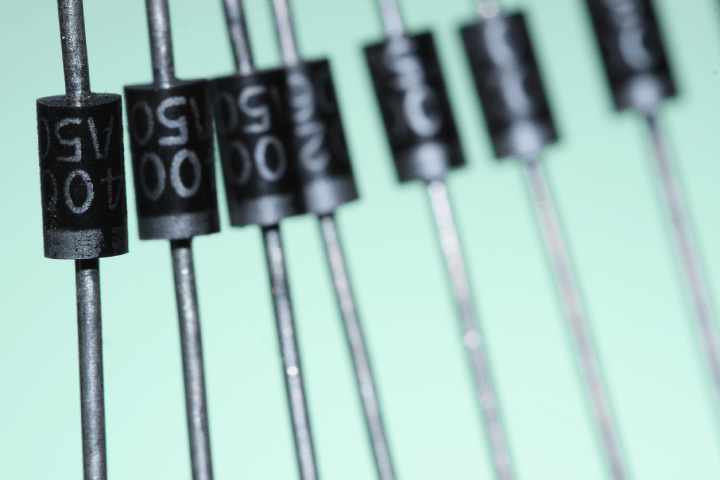
Table of Contents
- The Historical Context of Diode
- What is a Diode?
- The Purpose of a Diode
- What Does a Diode Do?
- The Three Primary Functions of a Diode
- How Do Diodes Work?
- Diodes in Rectifiers and Power Electronics
- Specialised Diodes
- Real-world Applications of Diodes
- Conclusion
- References
- Additional Resources
What Is a Diode? Historical Context
In the annals of electronics evolution, the diode definition in electronics holds a special place as one of the earliest semiconductor devices. Its journey, much like the flow of current it regulates, has been unidirectional - towards innovation and advancement. To understand what is a diode, it's important to explore its historical context. The inception of diodes can be traced back to the early 20th century with the discovery of the 'cat's whisker' or crystal rectifiers. These rudimentary diodes, made from thin wires touching mineral crystals, were the precursors to the modern semiconductor diodes we use today.
Development of Silicon and Germanium Diodes
As the decades rolled on, the 1950s saw the birth of the first silicon and germanium diodes. Silicon, with its superior temperature stability and electrical properties, soon became the material of choice, paving the way for the miniaturisation and integration of electronic circuits. The latter half of the 20th century witnessed the rise of specialised diodes, tailored for specific applications, from light emission to voltage regulation.
Today, diodes stand as a testament to human ingenuity, evolving from simple crystal detectors to sophisticated semiconductor devices that underpin the very fabric of our electronic age. Their historical journey not only charts the progress of electronic technology but also underscores the relentless human pursuit of knowledge and innovation.
Pioneers in Diode Technology
Several notable figures have contributed to the evolution of diode technology. Sir John Ambrose Fleming, in 1904, invented the vacuum tube diode, often referred to as the Fleming valve. This invention was pivotal in the development of early radio and telecommunication systems. Later, in the mid-20th century, the invention of the semiconductor diode by Russell Ohl marked a significant shift from vacuum tube technology, paving the way for the miniaturisation of electronic circuits.
Another milestone in diode history was the discovery of the light-emitting diode (LED) by Nick Holonyak Jr. in 1962. His invention revolutionised lighting technology, offering a more energy-efficient and longer-lasting light source compared to traditional incandescent bulbs. The evolution of diodes is a testament to the collaborative efforts of scientists and engineers across generations, each building upon the work of their predecessors to push the boundaries of what's possible.
What Is a Diode? Detailed Explanation
When discussing what is a diode, it's vital to consider its definition. A diode is a two-terminal electronic component that conducts current primarily in one direction. The diode function, including its use in converting AC to DC, is pivotal in electronic circuits.
Core Function of a Diode
So, what is a diode? At its core, a diode is a semiconductor component that primarily functions as a conduit for electrical current, allowing it to flow in just one direction. This is achieved through its fundamental structure, which consists of two distinct regions: the p-type and n-type semiconductors. The point where these two regions meet is termed the 'p-n junction'.
The Role of the p-n Junction
The p-n junction is the heart of a diode's operation. When these two semiconductor materials are brought together, they form a natural barrier, preventing electrons from the n-type material from combining with holes from the p-type material. However, when an external voltage is applied, this barrier can be overcome, allowing current to flow, but only in one specific direction.
Materials Used in Modern Diodes
Modern diodes are primarily made from semiconductor materials like silicon, germanium, and gallium arsenide. Silicon diodes are the most common due to their higher temperature tolerance and lower cost. The choice of material significantly influences the diode's performance, including its forward voltage drop, switching speed, and temperature stability. For instance, germanium diodes have a lower forward voltage drop compared to silicon diodes, making them suitable for specific applications.
Semiconductor Physics Behind Diode Operation
The operation of a diode is deeply rooted in semiconductor physics. At the atomic level, the p-type material is doped with atoms that have one less valence electron than required, creating 'holes'. Conversely, the n-type material is doped with atoms having an extra valence electron. When these materials come together to form the p-n junction, electrons from the n-type region fill holes from the p-type region near the junction, creating a depletion region. This region acts as a barrier, preventing current flow until an external voltage is applied, pushing electrons and holes towards the junction.
The Significance of Diodes in Electronic Circuits
This inherent characteristic of diodes, to act as one-way gates, is pivotal in electronic circuits. When integrated into a circuit, a diode ensures that electrical current follows the intended path, safeguarding components from potential damage and ensuring the desired operation of the device. In essence, while they might be small in stature, diodes play a monumental role in directing the symphony of electrons that power our electronic world.
What Is a Diode? Purpose and Functions
The primary function of a diode, including its role in rectification, regulation, and signal demodulation, highlights its versatility in electronics. Understanding what does a diode do in these contexts can greatly enhance one's grasp of electronic design.
Understanding what is a diode involves looking at its primary purpose and functions. The main purpose and function of a diode, often referred to as the function of a diode, is to serve as a gatekeeper for electrical current, ensuring it flows in a unidirectional manner. By doing so, diodes effectively act as electronic check valves, permitting current to move in one direction while staunchly resisting its flow in the opposite direction.
This unidirectional flow is not just a mere characteristic but a vital safeguard for countless electrical devices. Without this controlled flow, many electronic components could be exposed to the erratic and potentially harmful effects of alternating current or unexpected voltage reversals. By ensuring a consistent and predictable path for the current, diodes protect sensitive electronic components, prolonging their lifespan and ensuring their optimal functionality. In essence, diodes act as the silent guardians of the electronic realm, ensuring harmony and preventing chaos in the circuits they inhabit.
What Does a Diode Do? Diode Function and Purpose
What does a diode do in electronic circuits? Essentially, a diode regulates the direction of electrical current flow, allowing it to pass through in one direction while blocking it in the opposite direction. By design, it allows current to pass through it in one direction – from its anode (positive side) to its cathode (negative side) – while staunchly blocking any attempt of the current to flow in the reverse direction. This regulation is achieved through the diode's intrinsic p-n junction, which creates a barrier that either facilitates or hinders the movement of electrons based on the applied voltage.
The importance of this regulation cannot be overstated, especially when considering the myriad of circuits in which diodes are employed. For instance, in power supply circuits, diodes ensure that the output remains a steady direct current (DC), even if the input is an alternating current (AC). In communication devices, they help in demodulating signals, extracting the original information from a carrier wave. Furthermore, in protective circuits, diodes shield sensitive components from potential damage due to voltage spikes or surges. In each of these applications, the diode's ability to regulate current direction is paramount, ensuring that electronic devices operate efficiently, reliably, and safely.
Three Primary Functions of a Diode
When considering what is a diode, it's important to recognise its three primary functions: rectification, regulation, and signal demodulation. Each of these functions plays a crucial role in various electronic applications. While they have a multitude of applications, three primary functions stand out, showcasing the breadth and depth of their utility:
- Rectification: One of the most quintessential roles of a diode is in the process of rectification, which involves converting alternating current (AC) to direct current (DC). In power supplies, diodes are strategically placed to allow current flow during only half of the AC cycle, effectively transforming the oscillating AC waveform into a pulsating DC output. This is crucial for devices that require a steady and unidirectional power source.
- Regulation: Diodes, especially the Zener variant, are instrumental in voltage regulation. Zener diodes are designed to maintain a specific voltage across themselves when reverse-biased, making them invaluable in circuits that require a stable and consistent voltage level. By doing so, they ensure that sensitive components receive the right amount of power, preventing potential overloads or under-powering.
- Signal Demodulation: In the realm of communication, diodes play a crucial role in extracting original information from modulated signals, a process known as demodulation. Radio receivers, for instance, use diodes to separate the audio signal from the carrier wave, allowing listeners to hear the transmitted audio clearly. This function is vital for ensuring clear and accurate communication in various electronic devices.
Together, these three functions underscore the versatility and indispensability of diodes in modern electronics, highlighting their role in shaping and facilitating our interconnected world.
How Does a Diode Work? Diode Operation and Principles
Diodes, in their operation, are governed by the principles of semiconductor physics. Their behaviour under different voltage conditions, namely forward and reverse bias, determines their functionality in various circuits.
Forward-Biased Diode Operation
Understanding how does a diode work involves knowing that when a diode is forward-biassed, it means that the positive side (anode) of the diode is connected to the positive terminal of a power source, and the negative side (cathode) is connected to the negative terminal. Under this condition, the diode allows current to flow, but not immediately. There exists a certain minimum voltage, known as the diode's threshold voltage or cut-in voltage, which must be reached before the diode starts conducting. Once this voltage is surpassed, the diode allows a significant current to pass through. This property is fundamental in the process of rectification, where forward-biassed diodes are used to convert AC to DC, allowing current flow during the positive half of the AC cycle.
Reverse-Biased Diode Operation
In a reverse-biassed condition, the diode's anode is connected to the negative terminal of the power source, and the cathode is connected to the positive terminal. Under this setup, the diode resists the flow of current, acting almost like an insulator. However, every diode has a limit to how much reverse voltage it can withstand, known as the Peak Inverse Voltage (PIV). If the applied reverse voltage exceeds this PIV, the diode can undergo a phenomenon called breakdown, where it suddenly allows a surge of current to pass through. This can be detrimental and often leads to permanent damage to the diode and potentially other components in the circuit.
Understanding these two biasing conditions is crucial for anyone working with electronics, as it provides insights into the diode's behaviour and its role in various applications, from power conversion to signal processing. Properly leveraging these properties ensures the optimal performance of electronic devices and safeguards them from potential hazards.
Diodes in Rectifiers and Power Electronics: Diode Applications in Electronics
In the vast landscape of power electronics, diodes emerge as pivotal components, particularly in rectifier circuits. Their unique properties make them indispensable in shaping and controlling the flow of electrical power.
AC to DC Conversion Using Diodes
At the heart of many electronic devices lies the need for direct current (DC), even when the primary power source is alternating current (AC). Diodes, with their ability to allow current flow in only one direction, are the primary agents of this conversion. In a rectifier circuit, diodes are arranged in such a way that they only allow the positive half-cycles (in a half-wave rectifier) or both half-cycles (in a full-wave rectifier) of the AC to pass through, effectively converting the oscillating AC waveform into a pulsating DC output. The result is a unidirectional flow of current, which, with the aid of capacitors, can be further smoothened to produce a near-constant DC output.
Ensuring Smooth DC Power with Diodes
While the initial output from a rectifier is a pulsating DC, it's the combination of diodes and capacitors that ensures a smoother and more consistent DC output. The diodes ensure the unidirectional flow, while capacitors store and release energy, reducing the fluctuations in the DC waveform. This collaboration ensures that the electronic devices receive a stable power supply, crucial for their optimal operation.
Protection Against Reverse Voltage with Diodes
Beyond rectification, diodes play a protective role in power electronics. Devices and components can be sensitive to the direction of current or voltage polarity. Diodes, when placed appropriately in circuits, prevent any unintended reverse voltage from reaching these sensitive components. By blocking reverse current flow, diodes act as safeguards, ensuring that components are not exposed to conditions they aren't designed to handle, thus prolonging their lifespan and maintaining the integrity of the entire electronic system.
In summary, diodes are the unsung workhorses in power electronics, ensuring not just the conversion of power types, but also the safety and longevity of electronic components and systems.
Specialised Diodes: Types and Uses
While the basic principle of diodes revolves around the unidirectional flow of current, advancements in technology have led to the development of specialised diodes, each tailored for specific applications. Among these, Zener diodes and Light Emitting Diodes (LEDs) stand out due to their unique properties and widespread use.
Zener Diode
Zener diodes are a unique breed of diodes designed to operate in the reverse-biased mode. Unlike regular diodes, which resist current flow in the reverse direction until they reach their breakdown point, Zener diodes are specifically designed to have a precise breakdown voltage. When the reverse voltage applied across a Zener diode reaches this predetermined value, it allows current to flow without getting damaged. This characteristic makes Zener diodes invaluable as voltage regulators. By placing them in parallel with a load, they can maintain a consistent voltage level across the load, ensuring that devices receive a stable power supply, irrespective of fluctuations in the input voltage or changes in the load.
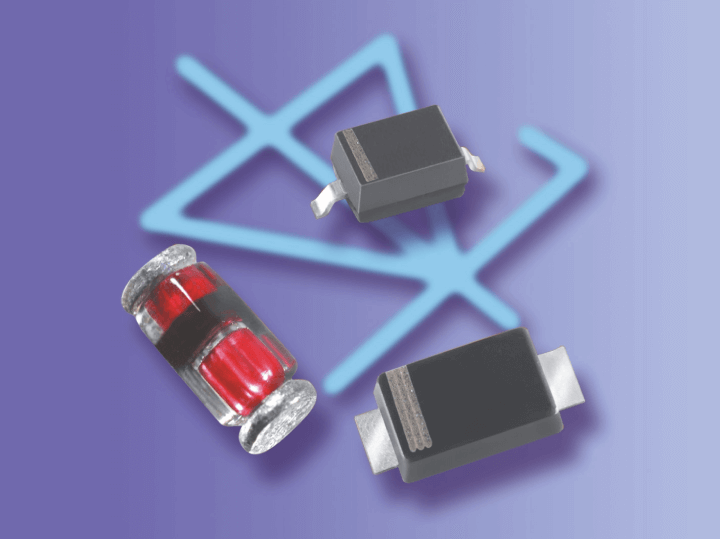
Light Emitting Diode (LED)
LEDs represent a transformative evolution in the world of diodes. While they share the fundamental property of allowing current in one direction, LEDs have the added capability of emitting light when forward-biassed. This light emission is a result of electroluminescence, where electrons recombine with electron holes, releasing energy in the form of photons. The colour of the emitted light is determined by the energy bandgap of the semiconductor material used in the LED. LEDs have revolutionised lighting solutions, offering energy-efficient, durable, and compact alternatives to traditional light sources. Their applications span a vast range, from indicator lights on electronic devices, to household lighting, traffic signals, and even high-definition television screens.
Both Zener diodes and LEDs exemplify the versatility and adaptability of diode technology, catering to specific needs and finding their niche in a plethora of modern-day applications.
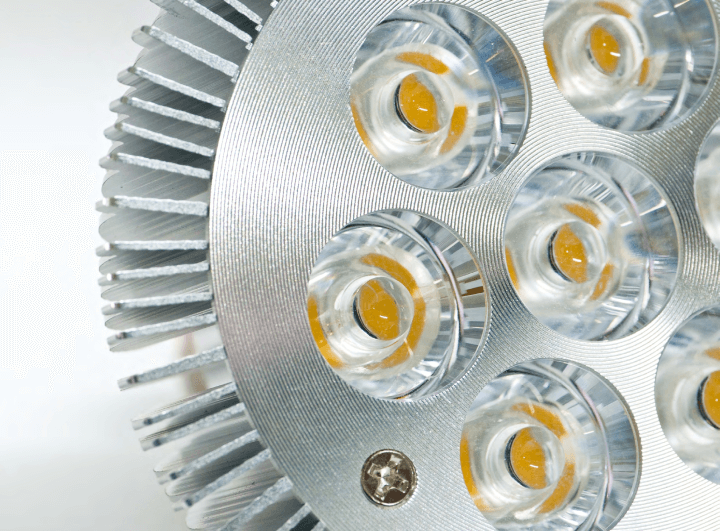
Light-Emitting Diode (LED) Design Guide
Pulsed Laser Diode (PLD)
Pulsed Laser Diodes are specialised semiconductor devices that emit high-intensity optical pulses. Unlike continuous wave laser diodes that emit a continuous beam of light, PLDs produce short, intense light pulses. This ability to produce rapid and precise light pulses makes them invaluable in various applications.
One of the primary uses of PLDs is in range-finding and LIDAR (Light Detection and Ranging) systems. By emitting a short pulse of light and measuring the time it takes for the light to reflect back from an object, the distance to the object can be accurately determined. This technology is crucial in applications like autonomous vehicles, where real-time distance measurement is essential for navigation and collision avoidance.
Another significant application is in fiber optic communication. PLDs can transmit data at high speeds by turning the light pulse on and off rapidly, representing digital data. This capability allows for the rapid transmission of data over long distances with minimal loss.
Furthermore, in the medical field, PLDs are used in various diagnostic tools and treatments, offering precision and minimising damage to surrounding tissues.
In essence, Pulsed Laser Diodes are a testament to the adaptability and versatility of diode technology, catering to specific needs in advanced technological applications.
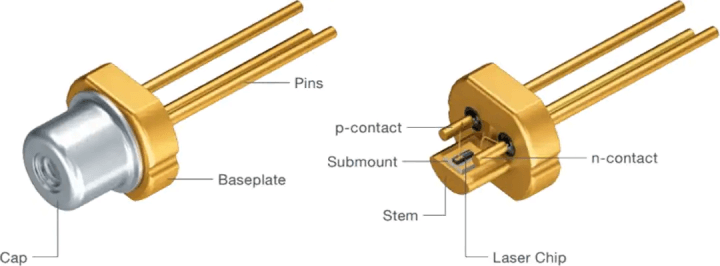
ams OSRAM Metal Can® Nanostack Pulsed Laser Diodes
Diode Arrays
Diode arrays are assemblies that contain multiple diodes in a single package. These arrays are designed to simplify circuit design and save space, especially in applications where multiple diodes are required to work in tandem. One of the primary applications of diode arrays is in protecting sensitive electronic equipment from electrostatic discharge (ESD) and voltage spikes. When a voltage spike occurs, the diode array can quickly divert the excess voltage away from sensitive components, preventing potential damage.
Another common use of diode arrays is in multi-channel signal processing. In communication systems, for instance, diode arrays can be used to separate or combine signals from different channels, ensuring clear and interference-free transmission. Their compact design and ability to handle multiple signals simultaneously make them invaluable in modern electronics.
Diode arrays come in various configurations, including series, parallel, and combination arrangements, each tailored for specific applications. Their integration into circuits not only streamlines the design process but also enhances the reliability and performance of electronic devices.
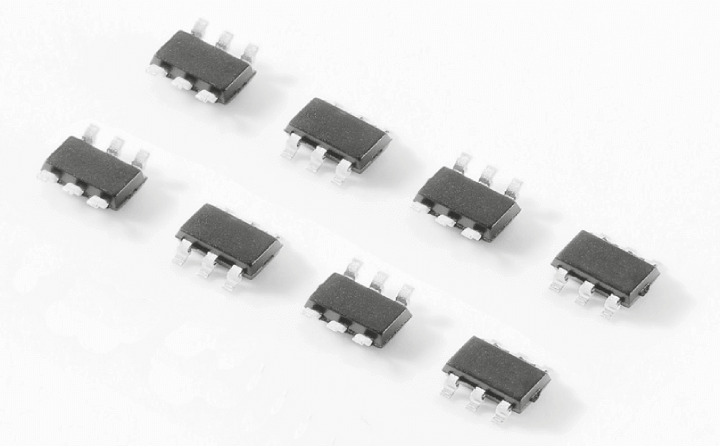
SP0504S Series 0.85pF Diode Array
Current Regulator Diodes
Current Regulator Diodes, also known as constant current diodes or current-limiting diodes, are designed to provide a constant current over a wide voltage range. They are essentially a type of Zener diode that operates in the breakdown region, but instead of maintaining a constant voltage, they maintain a constant current. These diodes are commonly used in situations where a steady current is required, regardless of the voltage applied, such as in LED circuits or biasing transistor amplifiers.
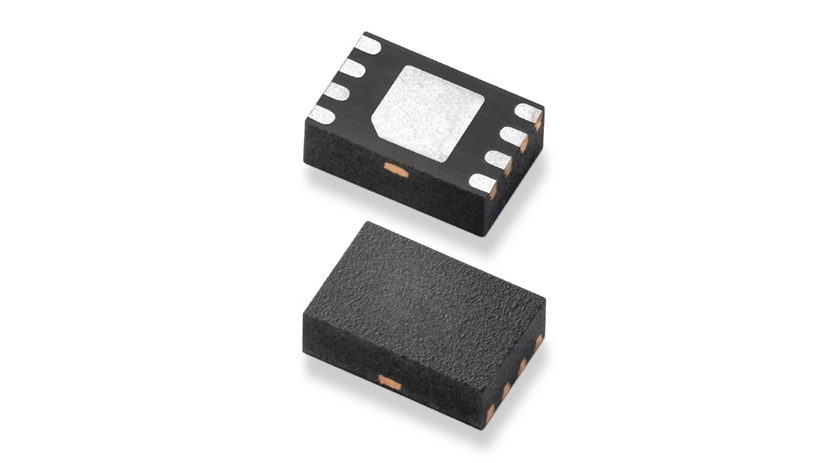
LS2405IDD23: 24V, 5A Very Low Forward Voltage Diode
PIN Diodes
PIN Diodes are a type of diode with a wide, undoped intrinsic semiconductor region between a p-type semiconductor and an n-type semiconductor region. The "PIN" in PIN diode stands for these layers: P-Intrinsic-N. They are primarily used in high-frequency applications due to their unique property of being able to quickly switch between a high and low resistance state. This makes them ideal for RF switches, attenuators, and photodetectors.
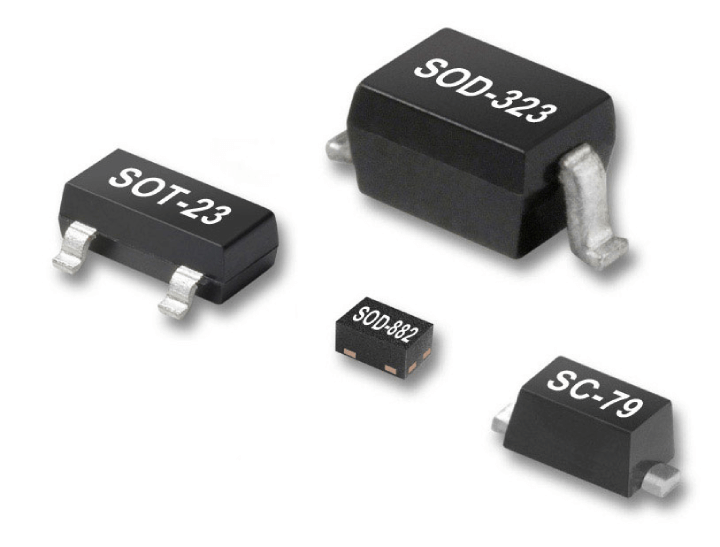
SMP1321 Series: Low Capacitance, Plastic Packaged PIN Diodes
Schottky Diodes
Schottky Diodes, named after the German physicist Walter H. Schottky, are characterised by a metal-semiconductor junction, as opposed to the semiconductor-semiconductor junction found in regular diodes. This unique construction results in a lower forward voltage drop and faster switching speeds. They are commonly used in power applications, radio frequency applications, and as rectifiers in power supply circuits due to their efficiency and fast response times.
![]()
Wolfspeed: 6th Generation 1700 V, 10 A Silicon Carbide Schottky Diode
TVS Diodes
Transient Voltage Suppressor (TVS) Diodes are designed to protect sensitive electronic equipment from voltage spikes. They can respond very quickly to sudden voltage increases, clamping them and preventing them from causing damage. TVS diodes are commonly found in surge protection devices, protecting circuits from electrostatic discharge (ESD), lightning, and other transient voltage events.
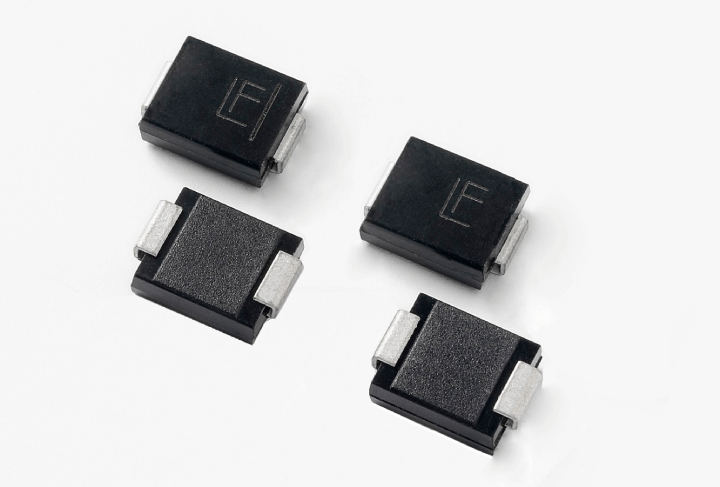
Littelfuse TPSMC Series: Surface Mount TVS Diodes - 1500W
Varactor Diodes
Varactor Diodes, or varicap diodes, are used primarily in electronic tuning circuits. Their unique property is the ability to change their capacitance based on the voltage applied to them. This makes them invaluable in applications like frequency modulation, phase-locked loops, and tunable filters. As the voltage across a varactor diode changes, so does its capacitance, allowing for electronic tuning of circuits.
![]()
Infienon Silicon Tuning Varactor Diodes
Real-world Applications of Diodes
While the technical intricacies of diodes are fascinating, understanding what is diode in electronics highlights the significance of this diode component; their real-world applications truly underscore their significance in our daily lives. Diodes are not just confined to complex electronic circuits; they are integral to many devices and systems we interact with regularly. Understanding what is diode in electronics is crucial for grasping its real-world applications. Let's explore some of these applications:
Consumer Electronics
- Smartphones: Protect sensitive components from voltage spikes.
- Televisions: Light-Emitting Diodes (LEDs) provide crisp and energy-efficient displays.
- Radios: Diodes demodulate the received signals, converting them into audible sound.
Automotive
- Alternator: Uses diodes to convert the generated AC into DC.
- LED headlights and taillights: Known for their brightness and efficiency, rely on diodes for their operation.
Solar Panels
- Prevent the reverse flow of current during the night, ensuring that the stored energy in batteries isn't wasted.
- Aid in converting the variable direct current generated by the panels into a more stable form suitable for household use.
Computing
- Memory storage: Ensure data integrity.
- Processing units: Diodes, as part of transistors, help in logical operations that drive computations.
Medical Devices
- X-ray machines: Diodes help in producing clear images by regulating the flow of high-voltage currents.
- Diode lasers: Used in various medical procedures, from skin treatments to eye surgeries, offering precision and minimal invasiveness.
In conclusion, diodes, with their diverse functionalities, are truly the unsung heroes of the electronic world. Their presence in everyday applications reinforces their importance and showcases the profound impact they have on modern technology and, by extension, our lives.
Conclusion
In the intricate tapestry of electronics, understanding what is a diode and its various functions is fundamental. These seemingly modest components, with their ability to dictate the direction of current flow, have been instrumental in shaping the electronic devices and systems that permeate our daily lives. From the fundamental task of rectification, ensuring our gadgets receive the right type of power, to the marvel of illumination seen in the vibrant displays of our screens and the energy-efficient lighting of our spaces, diodes play a central role.
Their diverse applications underscore not just their versatility but also their indispensability. Whether it's the silent work of a rectifier diode in a power supply, the precise voltage regulation by a Zener diode, or the brilliant glow of an LED, diodes are at the heart of many technological innovations. As we continue to advance into an era increasingly defined by electronics, the question "what is a diode" will remain ever relevant, highlighting the profound impact that these small but mighty components have on our world.
References:
Additional Resources
For those keen on delving deeper into the world of diodes and exploring a range of products, Mouser Electronics offers a wealth of information and a diverse product catalogue:
- Comprehensive Diodes Guide by Mouser Electronics
- Newest Products and Innovations from Mouser
- Mouser's Extensive Collection of Diodes & Rectifiers
Whether you're an electronics enthusiast, a seasoned professional, or someone simply curious about diodes, Mouser Electronics provides invaluable resources to enhance your understanding and guide your product choices.
Glossary of Terms
- Diode: A semiconductor device that allows current to flow in one direction only.
- Rectification: The process of converting alternating current (AC) to direct current (DC).
- Zener Diode: A diode designed to operate in the reverse-biased mode and maintain a specific voltage across itself.
- Light Emitting Diode (LED): A diode that emits light when forward-biased.
- Pulsed Laser Diode (PLD): A specialised semiconductor device that emits high-intensity optical pulses.
- Forward-Biased: A condition where the positive side of the diode is connected to the positive terminal of a power source, allowing current to flow.
- Reverse-Biased: A condition where the diode's anode is connected to the negative terminal of the power source, resisting the flow of current.
- PIN Diode: A type of diode with a wide, undoped intrinsic semiconductor region between a p-type and an n-type semiconductor region.
- Schottky Diode: A diode characterised by a metal-semiconductor junction, known for its lower forward voltage drop and faster switching speeds.
- Transient Voltage Suppressor (TVS) Diode: A diode designed to protect sensitive electronic equipment from voltage spikes.
- Varactor Diode: A diode whose capacitance changes based on the voltage applied to it, used primarily in electronic tuning circuits.
- Peak Inverse Voltage (PIV): The maximum reverse voltage a diode can withstand without breaking down.
- Electroluminescence: The process by which electrons recombine with electron holes, releasing energy in the form of photons.

